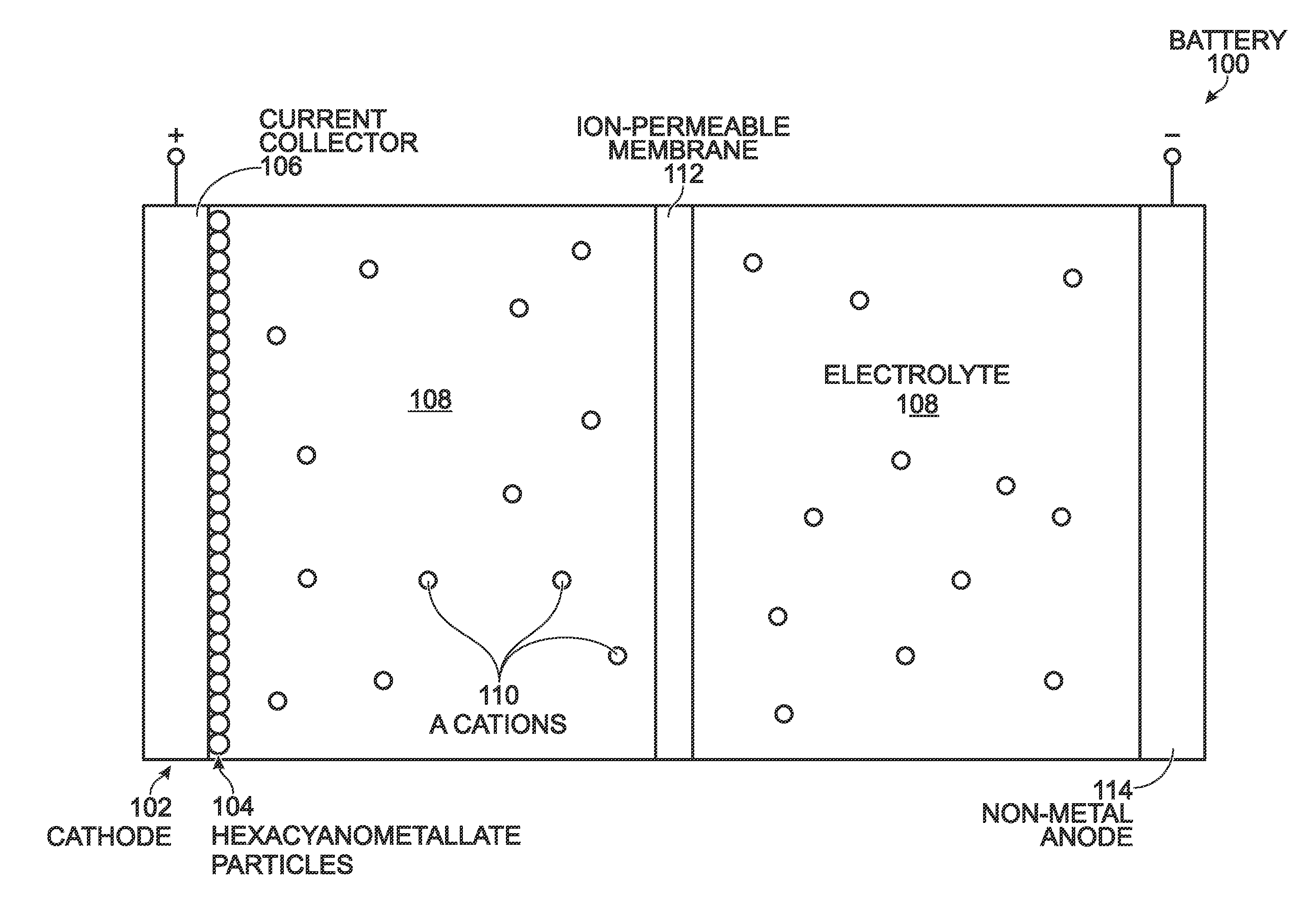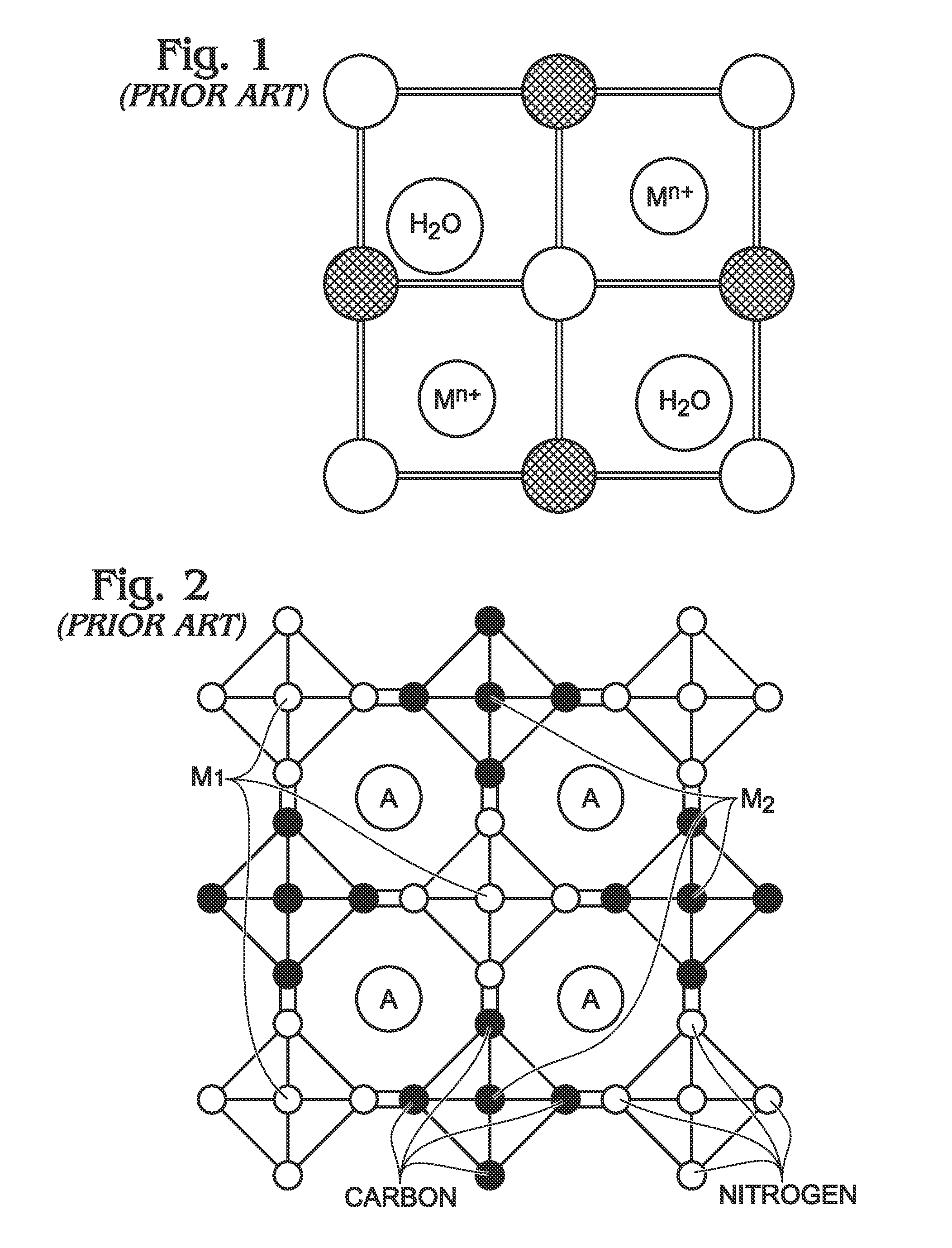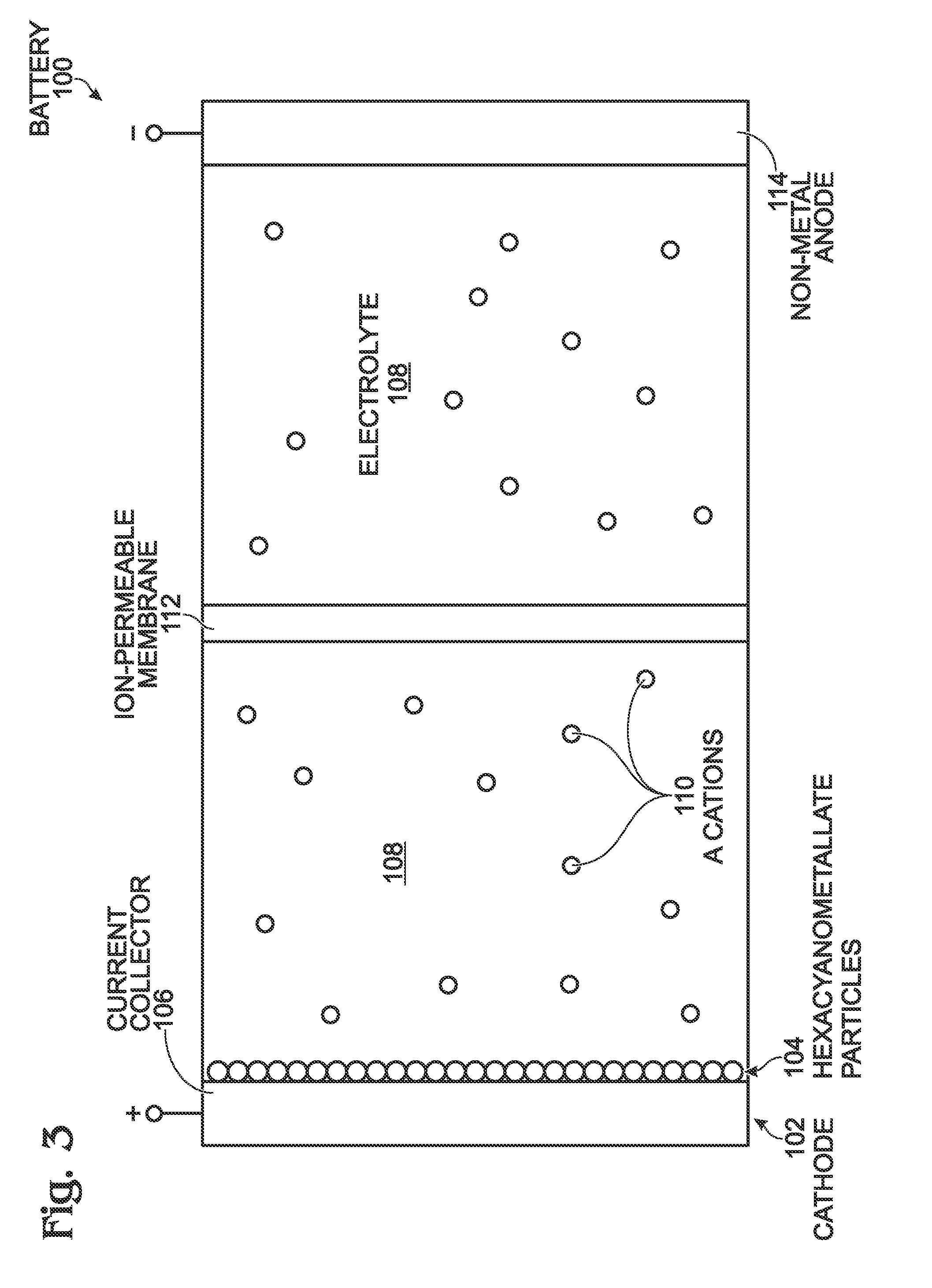Alkali and Alkaline-Earth Ion Batteries with Hexacyanometallate Cathode and Non-Metal Anode
a technology of hexacyanometallate and alkali or alkaline earth ion batteries, which is applied in the field of electrochemical cells, can solve the problems of destroying the structure of lithium batteries in several charge/discharge cycles, affecting the commercialization of lithium batteries as large-scale energy storage devices, and high cost of lithium metal, etc., and achieves low cost, long cycle life, and high energy.
- Summary
- Abstract
- Description
- Claims
- Application Information
AI Technical Summary
Benefits of technology
Problems solved by technology
Method used
Image
Examples
Embodiment Construction
[0024]FIG. 3 is a partial cross-sectional view of a battery with a hexacyanometallate cathode and non-metal anode. The battery 100 comprises a cathode 102 with hexacyanometallate particles 104 overlying a current collector 106. The hexacyanometallate particles 104 have the chemical formula A′n,M1xM2y(CN)6, and have a Prussian Blue hexacyanometallate crystal structure (see FIG. 2). The A cations may be either alkali or alkaline-earth cations. Likewise, the A′ cations may be either alkali or alkaline-earth cations. For example, the A and A′ cations may be Na+, K+, Mg2+, or Ca2+. Note: the A and A′ cations may be the same or a different material.
[0025]M1 is a metal with 2+or 3+valance positions. Likewise, M2 is a metal with 2+ or 3+ valance positions. For example, the M1 and M2 metals may be Ti, V, Cr, Mn, Fe, Co, Ni, Cu, Zn, Ca, or Mg. The M1 metal may be the same metal as the M2 metal, or a different metal than the M2 metal.
[0026]From the hexacyanometallate formula above, m is in the...
PUM
| Property | Measurement | Unit |
|---|---|---|
| size | aaaaa | aaaaa |
| particle size | aaaaa | aaaaa |
| crystal structure | aaaaa | aaaaa |
Abstract
Description
Claims
Application Information
 Login to View More
Login to View More - R&D
- Intellectual Property
- Life Sciences
- Materials
- Tech Scout
- Unparalleled Data Quality
- Higher Quality Content
- 60% Fewer Hallucinations
Browse by: Latest US Patents, China's latest patents, Technical Efficacy Thesaurus, Application Domain, Technology Topic, Popular Technical Reports.
© 2025 PatSnap. All rights reserved.Legal|Privacy policy|Modern Slavery Act Transparency Statement|Sitemap|About US| Contact US: help@patsnap.com



